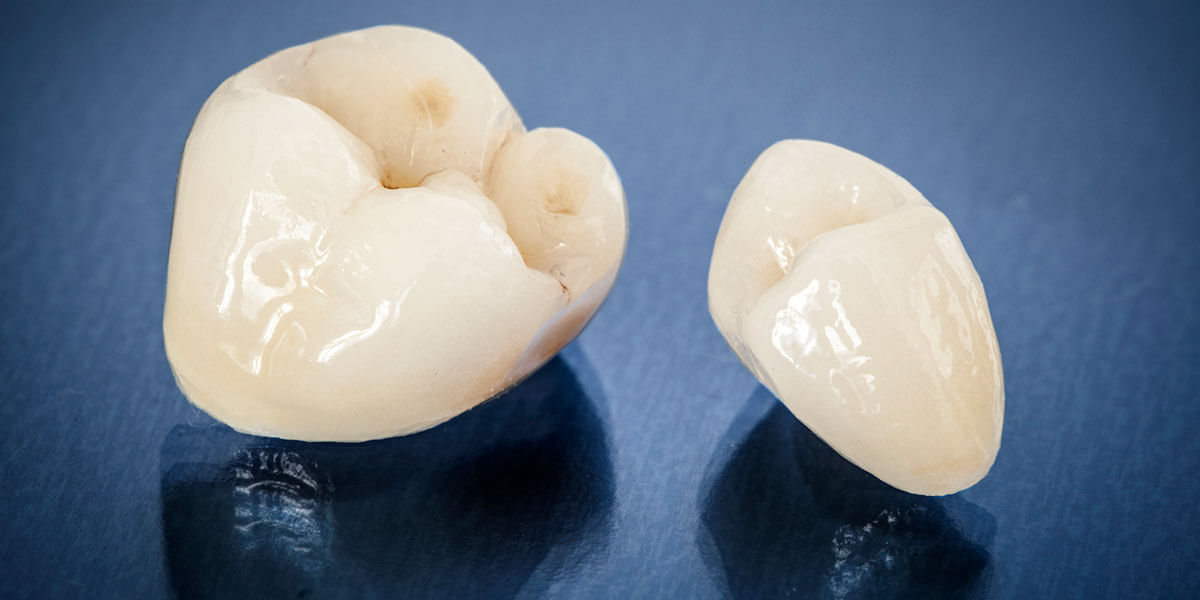What are dental crowns?
Dental crowns, popularly known as caps, can be thought of as helmets that cover the tooth. They serve as protection for the tooth, ensuring it remains fully functional.
What are the alternatives to dental crowns?
You can opt for large fillings on a tooth, but these often lead to fractures. To avoid the need for extractions or root canals, it's advisable to use a crown when the tooth structure is compromised. This fully covers and protects the tooth.
What types of dental crowns are there?
There are various types of crowns. Gold crowns were popular in the past and are still effective, though not aesthetically pleasing to many. Currently, ceramic crowns are widely used. They are beautiful, resemble natural teeth, and are both durable and strong.
Is a dental crown necessary after root canal treatment?
After a root canal, a crown is typically necessary. The root canal removes the tooth's vitality, making it dehydrated and fragile. Without a crown, the tooth might split under pressure, so it should be supported with a crown.
Can you explain how the dental crown procedure works?
For a crown appointment, we use iTera digital scanning to scan the original tooth. The tooth is then numbed, prepared, and slightly reduced to accommodate the crown. After another scan, the details are sent to the lab while a temporary crown is placed.
Does the dental crown placement hurt?
If the tooth is devitalized, numbing might not be necessary. However, if the tooth is vital, it will be numbed, ensuring no pain during the procedure.
Are there any consequences for getting a tooth crown?
While a crown compromises the tooth structure, crowns are only placed on teeth that are structurally compromised and need reinforcement.
Is it worth putting children's teeth in crowns?
Yes, if a child has a cavity, a crown can prevent premature tooth loss. This helps maintain the correct eruption sequence for adult teeth.
Do crowns look like normal teeth?
Nowadays, crown products are so advanced that they are indistinguishable from natural teeth, offering a very natural appearance.
Can you get cavities on crown teeth?
Yes, cavities can form at the margin where the crown meets the tooth. Poor oral hygiene, like neglecting to floss or brush, can lead to recurrent caries. Maintaining good oral hygiene is crucial.
How should I take care of my dental crown?
Treat your crown like a regular tooth by maintaining good oral hygiene to prevent cavities.
How long can you expect the dental crown to last?
The crown's longevity depends on maintenance. Some crowns last over 30 years, while others may need replacement in just a couple of years. Oral hygiene is essential to their durability.

If a tooth has more extensive decay, a dental crown may be the ideal aesthetic and functional restorative solution
Choosing to have a crown placed can preserve the natural tooth, which is always the goal as preserving the natural teeth helps maintain the supporting bone structure and stability of the surrounding and adjacent teeth.
The first step in the process is to take an impression that will be used to make a model of the teeth and bite. This allows the crown to be made to look and function like your natural tooth. The tooth will then be prepped, with the decayed areas being removed. An impression of the prepped tooth will be made so that the final crown will fit properly when it is placed.
Sometimes the final crown can be placed on the same day but other times a temporary crown will be placed while your final restoration is being created. Crowns often last a lifetime with proper care and oral hygiene.
There are four common types of crowns:
Ceramic
This type of crown is often used for teeth that are visible when smiling as they are made from a porcelain-based material that retains the look of your natural teeth.
Porcelain Fused to Metal
These crowns are known for their strength and durability while also allowing for a natural-looking restoration.
Gold Alloys
These may be used when more strength is needed, particularly for patients who grind their teeth at night.
Base Metal Alloys
These are strong and corrosion-resistant and are often used when there is less existing tooth structure available to support the crown restoration.
Instructions Following Crown, Bridge, Inlay/Onlay:
Following Tooth Preparation:
- Sensitivity and tenderness of the tooth and surrounding gums is common for the first day or two after a tooth has been prepared for a restoration. If the tenderness or sensitivity lasts longer than this, please contact our office.
- If anesthesia is used, avoid chewing, biting, and eating until the numbness wears off.
- The final restoration may be placed the same day that the tooth is prepared or may be placed during a separate appointment.
For Temporary Restorations:
- Eat softer foods, and avoid foods that are particularly crunchy, chewy, or hard.
- Carefully clean around the restoration, brushing and flossing daily. Be gentle when flossing, taking extra care not to loosen the temporary restoration. Slowly pulling the floss out by one end can help avoid putting too much pressure on the temporary.
- If the temporary restoration becomes loose or breaks, please call us immediately.
After Final Restoration Placement:
- Avoid chewing on hard, crunchy, or sticky foods for 24 hours in order to give time for the cement to fully bond.
- Mild sensitivity to hot or cold foods is not unusual and should dissipate after a few weeks. If sensitivity lasts more than six weeks, please let the office know.
Ongoing Care:
- Proper care of your restoration includes brushing your teeth after every meal and snack, and flossing at least once a day before bedtime.
- Rinsing your mouth with water or mouthwash will also help to remove any additional particles that may have been missed during brushing and flossing.
Please call our office if you are in pain or have any questions regarding your treatment.
